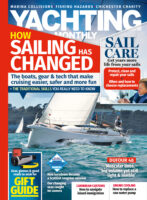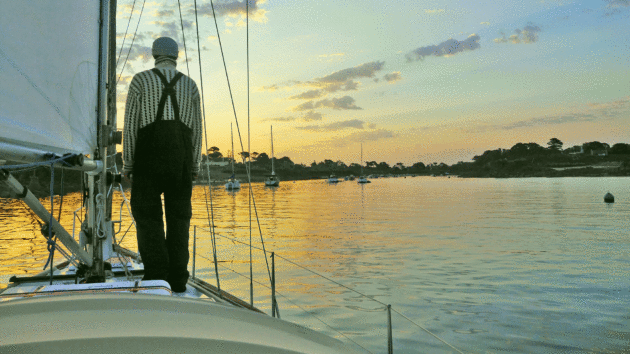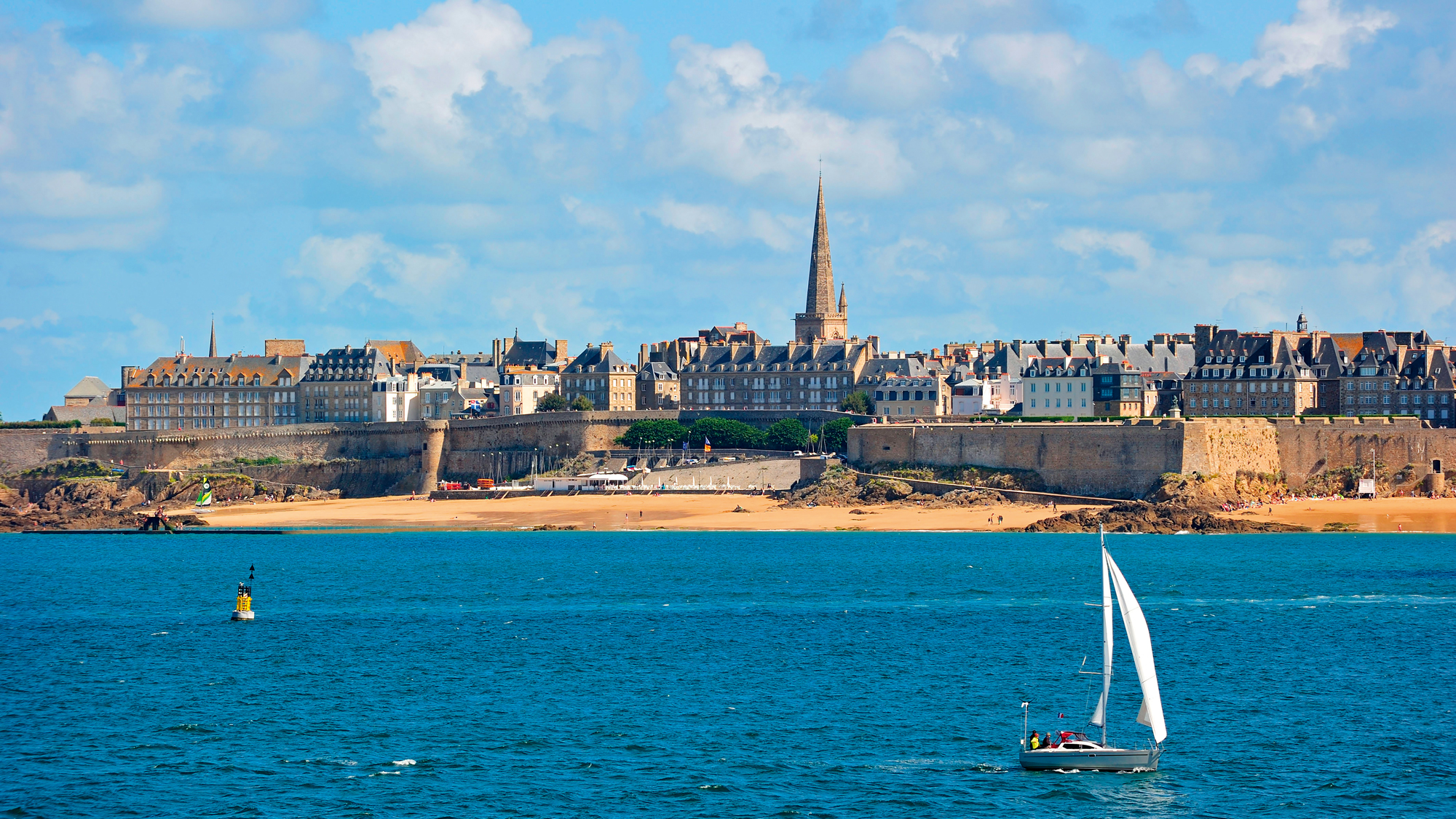Brittany in winter can be wild, wet and windy and not an obvious choice for spending the off-season on board. But sailing Brittany in particular has many charming advantages, as Detlef Jens found out
This was the one shopping trip that I’ll never forget. Indeed, I’ll probably have fond memories of that particular day in Brittany for the rest of my life.
I had sailed into the Rade de Brest where I was to meet friends with their boat and one fine summer day we hooked up in a small, rural town on the banks of the River Aulne that flows into the Rade de Brest and which is navigable for yachts up to the market town of Chateaulin.
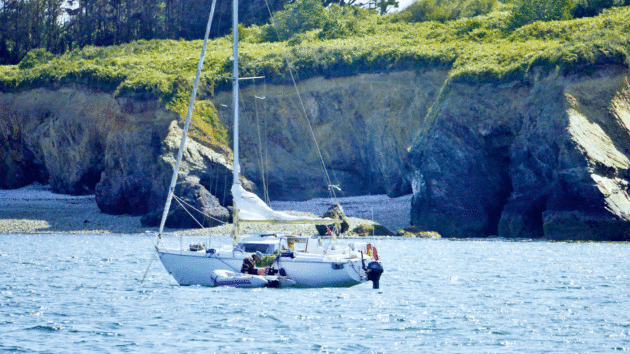
The Rade de Brest is a giant natural harbour with many good anchorages and some small towns with moorings or pontoons. Photo: Detlef Jens
A low bridge over the river is the barrier for any sailing boat with her mast up, but smaller motorboats can from here connect into the canals and waterways of inland Brittany. While we enjoyed our reunion in Port Launay, we decided to provision our ships as we would be cruising south in company from here. And what a way to do the shopping!
We took my boat and motored a few short miles further upstream from Port Launay, where we came into the outskirts of Chateaulin.
Getting provisions for sailing Brittany
On the starboard bank of the river was a huge Leclerc hypermarché, together with a very inviting jetty to which we moored my boat. As we walked around the monstrous hangar that was the store, we emerged onto a car park about the size of an airfield, with thousands of vehicles shimmering in the midday sun.
Inside the hypermarché we found anything and everything we could have wished for, and eventually made it back to the boat, pushing three fully laden shopping carts alongside.
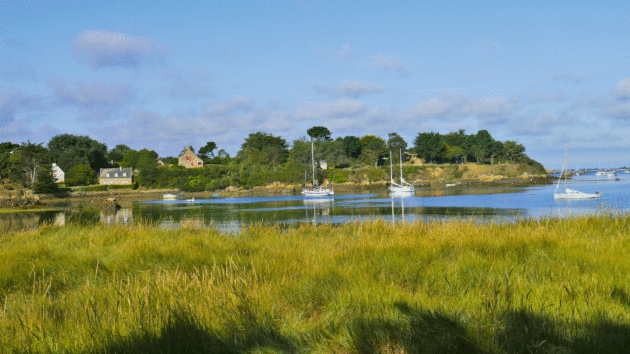
Ile de Bréhat is very beautiful but has very limited anchorages for deep-draught keel boats. Photo: Detlef Jens
After loading everything on board, we laid the cockpit table for a luxurious lunch with, among other delicacies, Breton oysters, crunchy fresh farmhouse bread, strong cheese and delicious paté, all to be accompanied by pre-cooled crispy Muscadet wine from the banks of the Loire river, not too far south from here.
As we slowly motored downstream back to Port Launay, we indulged in this beautiful cockpit lunch and congratulated ourselves on our civilised shopping expedition.
This particular episode in wonderful Brittany happened many years ago – the hypermarché is still there – but it perfectly exemplifies what, for me, cruising in Brittany is all about. Savoir-vivre, enjoying life, immersing oneself into the local culture and also, of course, savouring the truly impressive and very varied land and seascapes.
So, when I decided to re-visit Brittany this past summer, I was once more so enchanted that I also chose to spend the winter there. Not just parking the boat and leaving for home, but instead living on board in one of the many coastal towns that offer sheltered harbours.
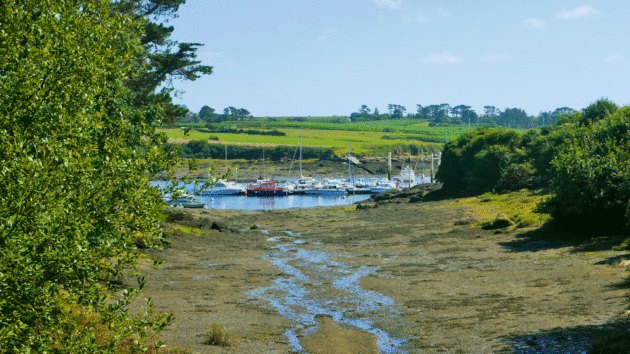
The pontoons in Aber Ildut stay afloat even at low tide. Photo: Detlef Jens
Not just because in my case ‘home’ happens to be synonymous with my boat, but simply that experiencing a winter would surely be a completely different and much more intense experience than sailing Brittany during the summer holiday season.
For many, Brittany may seem like the end of the world. This notion reaches back to Roman times, who named the westernmost province of Brittany, Finisterrae, literally meaning ‘end of the land’. Maybe not so surprisingly, Bretons have another take on this. The Breton name for this same stretch of wild coast is ‘Penn ar bed’, which translates to ‘the beginning of the world’.
I tend to lean more towards this latter perception, which also holds true for the long and usually wet and windy winter season. The entire region has an incredibly rich cultural heritage that is kept very much alive, in maritime history as well as in music, poetry and the arts. Brest is, after Paris, the town in France with the most theatres in relation to inhabitants, with some of the most avant-garde performances.

Auray at the head of the river, flowing into the Morbihan basin, is a busy town with some good moorings. Photo: Detlef Jens
Every town, village and market-place has their own festivities, mainly during summer but many also in winter. Which is the time of year for the locals to move closer together after the busy summer. And, I dare say, anyone living on a boat in a mariner’s community, say, for example Douarnenez, during winter will probably soon be included in at least some of the social life ashore.
Life during a Breton winter is slow and cosy, unperturbed by the activities of summer which makes it much easier to find contact with the locals who might now actually take an active interest in you.
Choosing your port of hibernation
Finding your best hibernation berth requires some thought and planning in advance. Many boats are kept in the water during winter, so mooring space in the more popular harbours tends to be booked well in advance, often months ahead of November which is the month from which winter rates apply. But how to choose the best place?
These are the basic considerations. First and foremost, find a truly sheltered harbour. Winter storms in this part of the world can be savage and cause damage even in ports that are not completely sheltered.
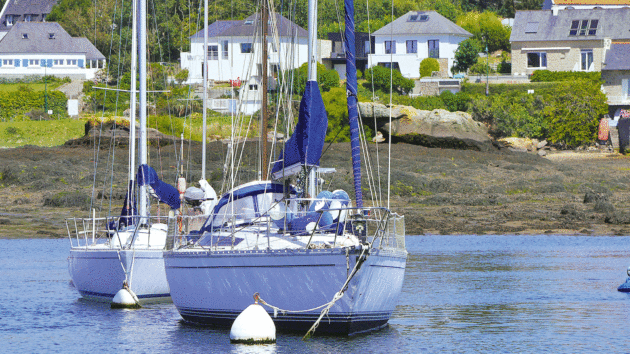
: In many rivers, such as here in Alber Ildut, mooring buoys may be used by visiting yachts. Photo: Detlef Jens
However, many if not the majority of harbours in Brittany are closed off by locks, while some only have a sill that can be passed at certain times around highwater, which is fine in summer but not so reassuring when the winter gales come roaring in. And some places are far inland such as Port Launay, which makes them completely safe. Unless winter flooding of rivers becomes an issue.
Article continues below…
Crossing the Channel to explore Brittany
Like many British sailors, I had been put off going to our close neighbour Cherbourg by the thought of crossing…
Six of the best drying anchorages in the UK
A yacht that is designed or equipped to sit on the bottom gives her crew a wider choice of cruising…
Choose an accessible spot
The second aspect to be taken into account would be accessibility, both over land and from or to sea. Frequent public transport close by is an obvious bonus, when wanting to travel home over land at some point, or if friends or family should want to come and visit.
Proximity to the rail service or, better still, directly to a main TGV fast rail line really helps, although one should be aware of the centralised French rail network. Literally every connection is via Paris, and often you will not only change trains there, but will also have to take the Metro from one mainline station to the other. If, for example, you want to travel by train from Brest to Nantes, you cannot, by rail, follow the more or less direct route along the coast but will have to go to Paris first.
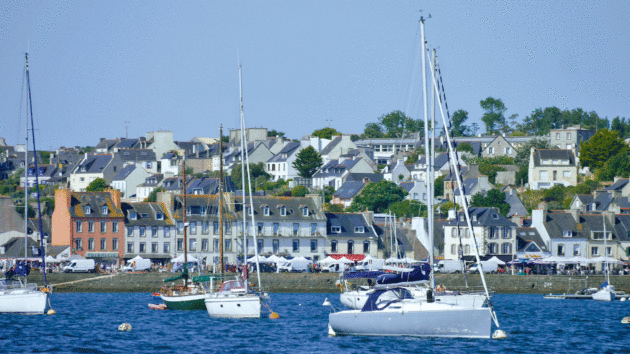
Camaret-sur-Mer is a beautiful seaside town with a large marina and deep, anchorage. Photo: Detlef Jens
Maybe not quite as significant for the winter but still worth considering is how easily or not the chosen harbour can be reached from sea, and how easily the sea can be reached from harbour. This mainly is a question of locks and tides, but also how far inland or upriver your boat might be moored.
There will be some fine sailing days even during winter, especially in southern Brittany, where one might be tempted to untie the lines for a day or two to break the possible winter monotony.
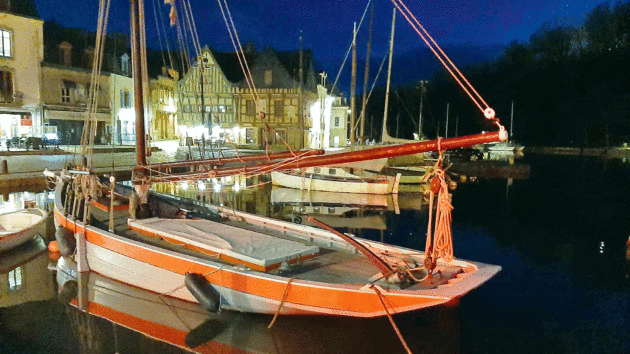
‘To be sure of getting a winter berth, you must reserve months in advance’. Photo: Detlef Jens
Finally, a village or town close by that is also inhabited and lively during winter really is a must. Not only for the cultural life but also for basic requirements such as shopping, bars and restaurants. This should be a medium-sized town, maybe the regional centre, and not a summer hot-spot that often more or less closes down for winter.
This also goes for the very attractive islands off the south Breton coast. During winter, I would find these a bit too remote and deserted.
North or South Brittany?
This could be a matter of personal preference, but while north Brittany obviously is much closer to the UK, both by ferry and by your own boat, south Brittany for me has more substantial arguments for it. Especially the weather, which tends to be that bit nicer, and milder, especially so in winter.
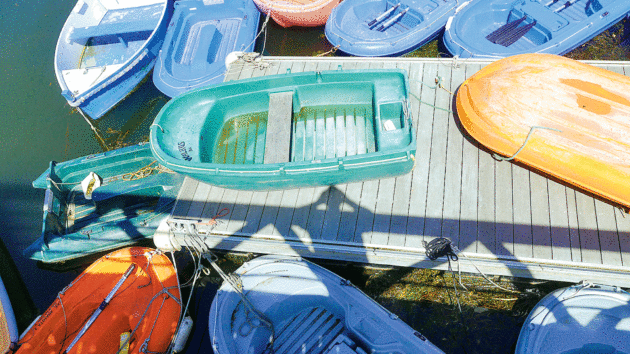
Carrying a dinghy is a great plus in these waters where many anchorages and mooring buoys beckon. Photo: Detlef Jens
Also, the south Breton coast has some fine towns and ports that are high on my personal list of favourites. In the north, Morlaix is a lively town with a large yacht harbour and friendly yachting scene, but it really is known for frequent and prolonged rainfall, especially in winter. Also, of course, it is a long way upstream from the sea, but this and the lock at the end of the river make it completely sheltered.
Another point on the plus side are very modest mooring rates during winter, which are noticeably higher in south Brittany. Having said that, it must be noted that winter rates for south Breton harbours, such as Brest or Vannes, are perfectly acceptable, especially when compared to sailing grounds further north (UK) or south (Med).
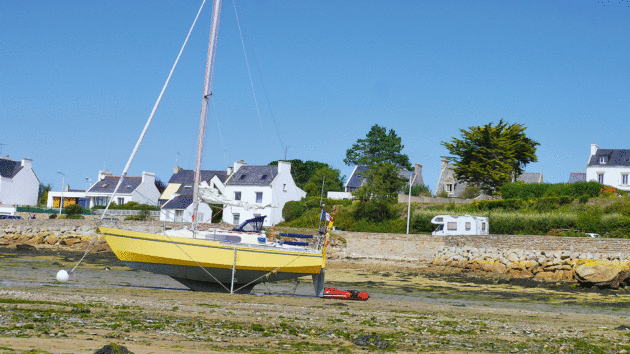
Typical small drying harbour in northern Brittany. If your boat can take the ground the choices suddenly become vast. Photo: Detlef Jens
Micro-cruising grounds
Both the huge natural harbour of the Rade de Brest and the Gulf of Morbihan are interesting cruising areas that can also be explored in winter, when conditions at sea and along the coast might be too rough for comfort. I have already mentioned Port Launay (and Chateaulin) on the Aulne river in the Rade de Brest. Port Launay is a common wintering harbour.
However, berthing is alongside a public quay which is no problem, as long as someone is staying on board. I would, however, be hesitant to leave the boat unattended here. There are several nice anchorages and small villages in the Rade and these can obviously also be visited during the off season, but are not
really long-stay options.
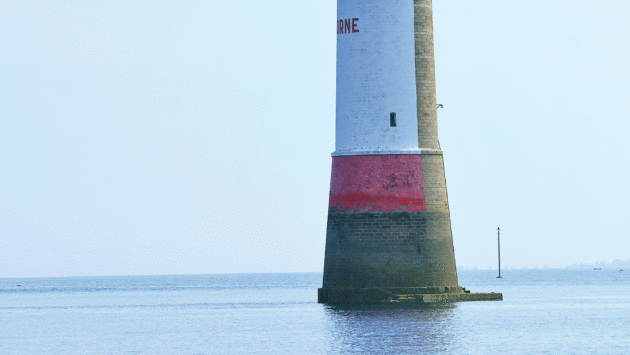
Navigating the intricate channels of the north Breton coast takes care, but the fairways are well marked. Photo: Detlef Jens
For this, the two large marinas of Brest are perfectly suitable. Marina Moulin Blanc is the slightly cheaper of the two, a little bit out of town but well connected by frequent buses. The other, Marina du Château, is close to the city centre, smaller and slightly more expensive. Take your pick!
Favourite places to hibernate while sailing Brittany
As you might have noticed, Brest is high on my list for wintering favourites. And not only for live-aboards, the marina Moulin Blanc is also a very good option for storing the boat ashore (or in the water) and leaving for home. A bit further south, Douarnenez is one beautiful charm of a town, vibrant almost year-round, with a harbour basin behind a lock and close to the town centre.
However, this is also a very popular place for live-aboards and cruising folk of all descriptions, and to be sure of getting a winter berth, you must reserve months in advance. I sent an application for a winter mooring to the harbour office there last July and was informed, in September, that I was too low on
the list and all places were taken.
It was only after I had made other arrangements, in October, that I was contacted again if I were still interested, as someone apparently had dropped out of the list…
Another first-rate winter harbour is the port of Vannes in the Morbihan. This, again, is a sheltered basin behind a lock (and well inshore at the far end of the gulf of Morbihan) and it has all the facilities, including of course the regional centre of Vannes itself. This is a beautiful, historic walled town that also remains lively during winter, and which has direct TGV train connections to Paris. And from there to the entire rest of the world…
The odd one out on my personal list is the huge marina of Le Crouesty by the entrance to the Gulf of Morbihan. This is not a town, or even a village,
but it is such a major marina that it has its own life there, year-round, and obviously also all boating facilities including chandlery and all types of repairs.
You will probably be more likely to get to know fellow sailors here than, say, in Vannes (which can be reached over land by a regular bus connection that will take you there in just over an hour). For those beautiful days of winter sailing, on the other hand, Le Crouesty is the best placed of all. You can choose to sail out from here to some of the islands, or pop inside into the Gulf of Morbihan.
Conclusion
Staying in a nice place for the winter is, for me, one of those things that the liveaboard cruising life is all about. Especially in southern Brittany, you can find a snug and safe winter berth for reasonable rates in a pleasant place that will, after a while, let you taste the feeling of being at home there for a while.
And then, come spring, you’ll be ready to move on again…
Enjoyed reading this?
A subscription to Yachting Monthly magazine costs around 40% less than the cover price, so you can save money compared to buying single issues.
Print and digital editions are available through Magazines Direct – where you can also find the latest deals.
YM is packed with information to help you get the most from your time on the water.
-
-
- Take your seamanship to the next level with tips, advice and skills from our experts
- Impartial in-depth reviews of the latest yachts and equipment
- Cruising guides to help you reach those dream destinations
-
Follow us on Facebook, Twitter and Instagram.
Note: We may earn a commission when you buy through links on our site, at no extra cost to you. This doesn’t affect our editorial independence.

